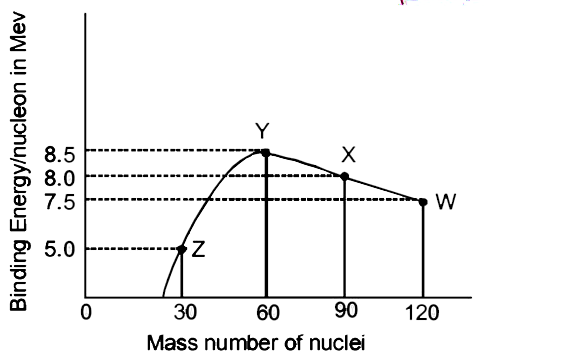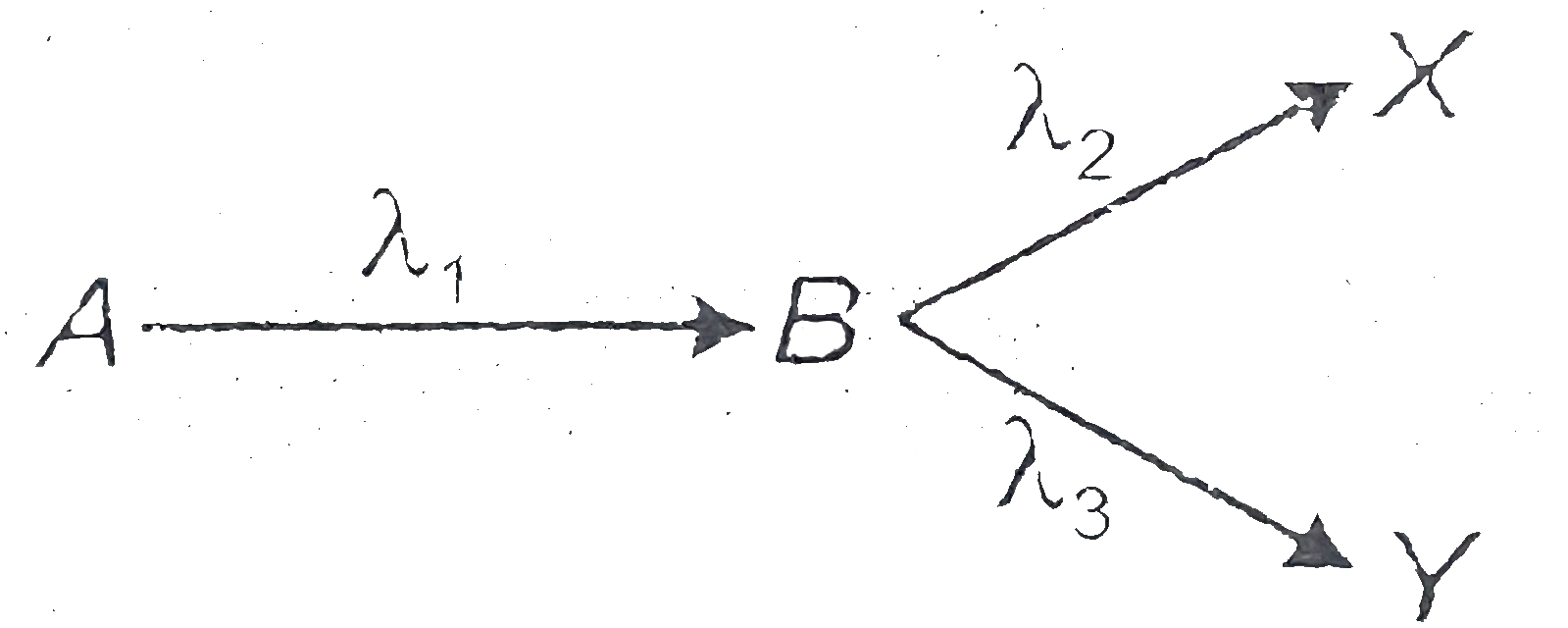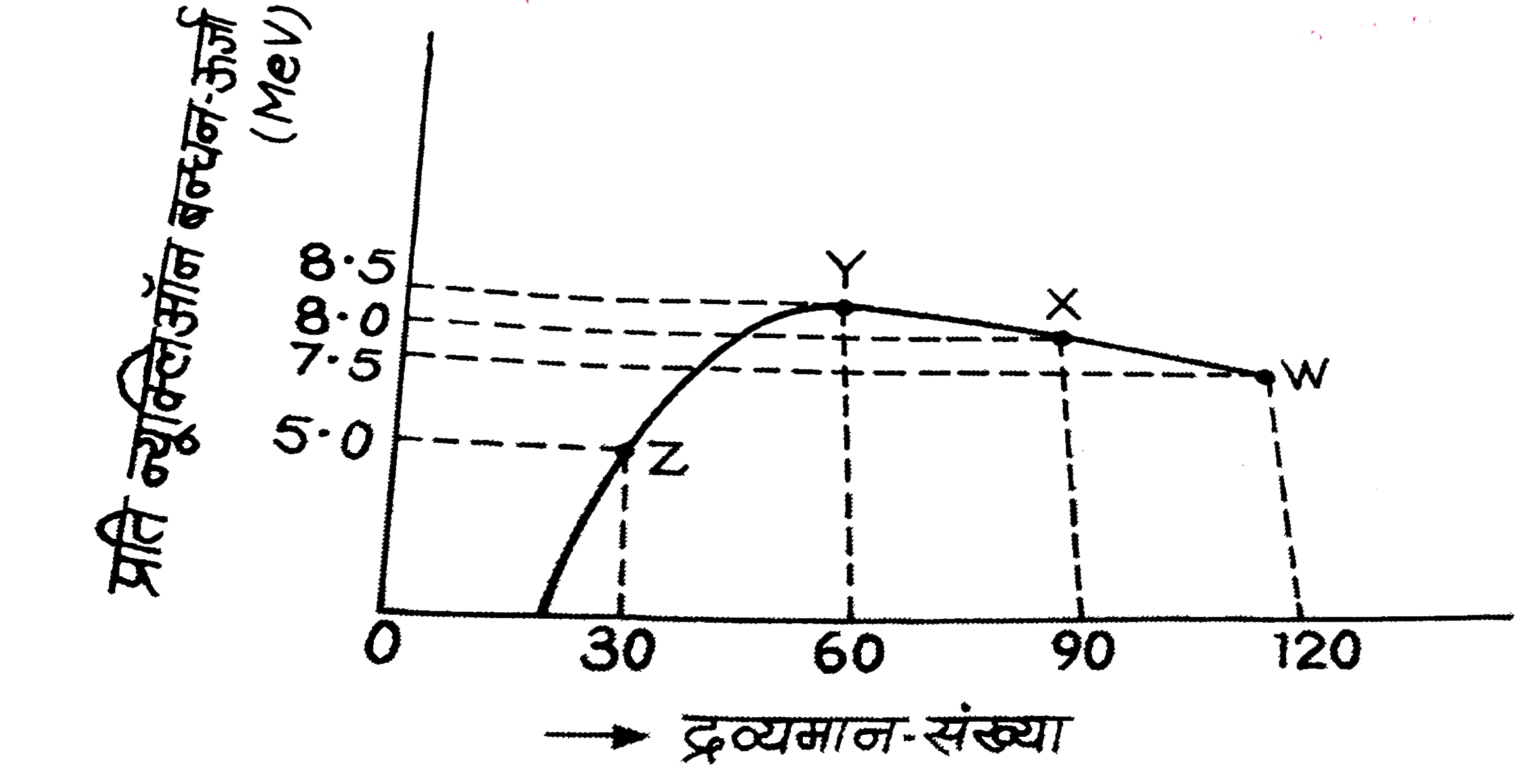Binding energy per nucleons vs mass curve for nucleus is shown in the figure W,X,Yand Z are four nuclei indicated on the curve . The process that would release energy is

Y→2Z
W→X+Z
W→2Y
X→Y+Z
The correct Answer is:C
Step by step video & image solution for Binding energy per nucleons vs mass curve for nucleus is shown in the figure W,X,Yand Z are four nuclei indicated on the curve . The process that would release energy is by Physics experts to help you in doubts & scoring excellent marks in Class 12 exams.
Updated on:21/07/2023Topper's Solved these Questions
- NUCLEIBook:AAKASH INSTITUTEChapter:NUCLEIExercise:Assignment Section C Objective (More than one option are correct )
Explore 10 Videos
- NUCLEIBook:AAKASH INSTITUTEChapter:NUCLEIExercise:Assignment Section D (Linked Comprehension )
Explore 9 Videos
- NUCLEIBook:AAKASH INSTITUTEChapter:NUCLEIExercise:Assignment Section A Objective (One option is correct )
Explore 52 Videos
- MOVING CHARGES AND MAGNETISMBook:AAKASH INSTITUTEChapter:MOVING CHARGES AND MAGNETISMExercise:Assignment Section J (Aakash Challengers Questions)
Explore 5 Videos
- OSCILLATIONSBook:AAKASH INSTITUTEChapter:OSCILLATIONSExercise:Assignment (Section D) (ASSERTION-REASON TYPE QUESTIONS)
Explore 13 Videos
Similar Questions
Choose the correct alternative
View SolutionThe rate at which a particular decay process occurs in a radio sample, is proportional to the number of radio active nuclei present . If N is the number of radio active nuclei present at some instant, the rate of change of N is dNdt=−λN. Consider radioactive decay of A to B which may further decay either to X or to Y, λ1,λ2andλ3 are decay constants for A to B decay , B to X decay and B of Y decay respectively. if at t=0 number of nuclei of A,B , X and Y are N0,N0,zero and zero respectively

and N1,N2,N3,N4 are number of nuclei A,B , X and Y at any instant.
Rate of accumulation of B of any instant will be
View SolutionSize of nucleus is of the order of
View SolutionA long straight copper wire, of circular cross ection, contains n conduction electrons per unit volume, each of charge q. Show that the current l in the wire is given by
l=nqvπa2
where v is the drift velocity and a is the radius of the wire.
At a radial distance r from the axis of the wire, what is the direction of the magnetic field B due to the current l? Assuming that the magnitude of the field is B=μ0l/2πr(r≥a), obtain an expression for the Lorentz force F on an electron moving with the drift velocity at the surface of the wire.
If l=10 A and a = 0.5mm, calcualte the magnitude of (a) the drift velocity and (b) the forcce, given that for copper, n=8.5×1028m−3
View SolutionA: Simple harmonic motion is not a uniform motion.
R: Simple harmonic motion can be regarded as the projection of uniform circular motion.
View SolutionBinding energy per vs mass curve for nucleus is shown in the figure W,X,Y and Z are four nuclei indicated on the curve . The process that would rease energy is
View Solutionfour nuclei of an element fuse together to form a heavier nucleus. If the process is accompanied by release of energy, which of the two -the parent or the daughter nucleus would have higher binding energy per nucleon?
View SolutionA heavy nucleus X of mass number 240 and binding energy per nucleon 7.6 MeV is split into two fragments Y and Z of mass numbers 110 and 130. The binding energy of nucleons in Y and Z is 8.5MeV per nucleon. Calculate the energy Q released per fission in MeV.
View SolutionBinding energy per nucleon plot against the mass number for stable nuclei is show in the figure. Which curve is correct ?
View Solutionनिम्न चित्र में नाभिको की प्रति न्यूक्लिऑन बंधन-ऊर्जा तथा द्रव्यमान- संख्या के बीच ग्राफ दिखाया गया है! ग्राफ पर चार नाभिक W,X,Y तथा Z चित्रित किये गए है! वह प्रक्रिया, जिसमे ऊर्जा मुक्त होगी नहीं है:

View SolutionDraw the curve showing the variation of binding energy per nucleon as a function of mass number A. Explain the stability of the nucleus from the curve .
View SolutionDefine binding energy of a nucleus. Draw a curve between mass number and average binding energy per nucleon. On the basis of this curve, explain fusion and fission reactions.
View SolutionThe curve between the binding energy per nucleon and the mass of the nucleus is shown in the figure. Four nuclei W, X, Y and Z are indicated on this curve. Nuclear reaction in which energy will be produced is
View SolutionA heavy nucleus X of mass number 240 and binding energy per nucleon 7.6 MeV is split into two fragments Y and Z of mass numbers 110 and 130. The binding energy of nucleons in Y and Z is 8.5 Me V per nucleon. Calculate the energy Q released per fission in Me V.
View SolutionA heavy nucleus X of mass number 240 and binding energy per nucleon 7.6 MeV is split into two fragments Y and Z of mass numbers 110 and 130. The binding energy of nucleons in Y and Z is 8.5 MeV per nucleon. Calculate the energy Q released per fission in MeV.
View SolutionA heavy nucleus X of mass number 240 and binding energy per nucleon 7.6 MeV is split into two fragments Y and Z of mass numbers 110 and 130 . The binding energy of nucleons in Y and Z is 8.5MeV per nucleon. Calculate the energy Q released per fission in MeV.
View Solution
